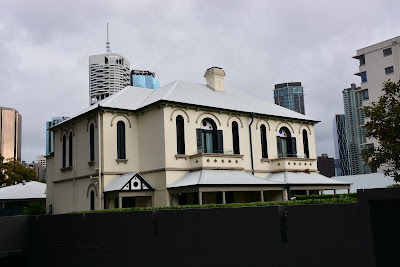Kangaroo Point
Kangaroo Point a Historical Overview
The following is taken from the web site https://kangaroopointhistory.com.au/early-history/kangaroo-point/ compiled and managed by the Kangaroo Point and Districts History Group
Kangaroo Point is one of the earliest areas settled in Brisbane and is generally regarded as Brisbane’s oldest suburb. Before British settlement Kangaroo Point was the home for many of the Turrbal people who used the Brisbane River, which they knew as Mairwar, for food and a means of travel. It was only a small population, maybe 300 people, the whole river population down to the bay was about 2000.
In 1823, explorer Lt. John Oxley who had been sent north from Sydney Town by Governor Brisbane in search of a penal settlement, entered the Brisbane River with the help of two escaped convicts who had been living there with aborigines. He described Kangaroo Point as a “jungle, fringed with mangroves with the higher land open forest, covered with grass”.
During the time of the subsequent convict settlement (1825–41), Kangaroo Point was cleared and used for cultivation of crops mainly maize and wheat to feed the struggling settlement. Subsequently, the area was opened up for free settlement, the first land sales taking place on 13 December 1843. Among the early purchasers was Captain J.C.Wickham, the Police Magistrate.
Surveyor James Warner built the first house at Kangaroo Point in 1844.
Kangaroo Point’s first school was opened in 1861 by the Church of England. It came under the control of the Board of Education in 1867 and consisted of a boys department and a girls department. A separate Girls and Infants school opened on 2 March 1874. This was replaced by the Kangaroo Point Girls School and the Kangaroo Point Infants School which both opened on 20 January 1890. The Kangaroo Point Boys School, Girls School and Infants School closed on 28 April 1950 and amalgamated to become the Kangaroo Point State School. It was located on the site of the old Southbank Institute of TAFE, on the corner of River Tce and Main St. Kangaroo Point Park is now located here.
Main Street was the only road in Kangaroo Point, and the sawmill and engineering works had not yet been constructed there.
In 1887, the Yungaba Immigration Centre was built at the bottom of Main Street to replace the existing centre in William Street for more “pleasant surroundings”, where the Treasury Casino is now located. Immigrants were accommodated at no cost for fourteen days and then given a free pass to any part of the colony by rail. During the Boer War, World War I and World War II the building was used as a military hospital and demobilisation depot and during the depression (1929-1932) it was used as a dispersal centre for food and clothing. After WWII ended Yungaba was once again used as an immigration depot handling the mass migration of European immigrants. The building is now used for upmarket apartment residences.
Kangaroo Point Today 2024
Silverwells - Main Street Kangaroo Point
Sunnyside
Brisbane Courier (Qld. : 1864 - 1933), Tuesday 28 December 1880, page 4














